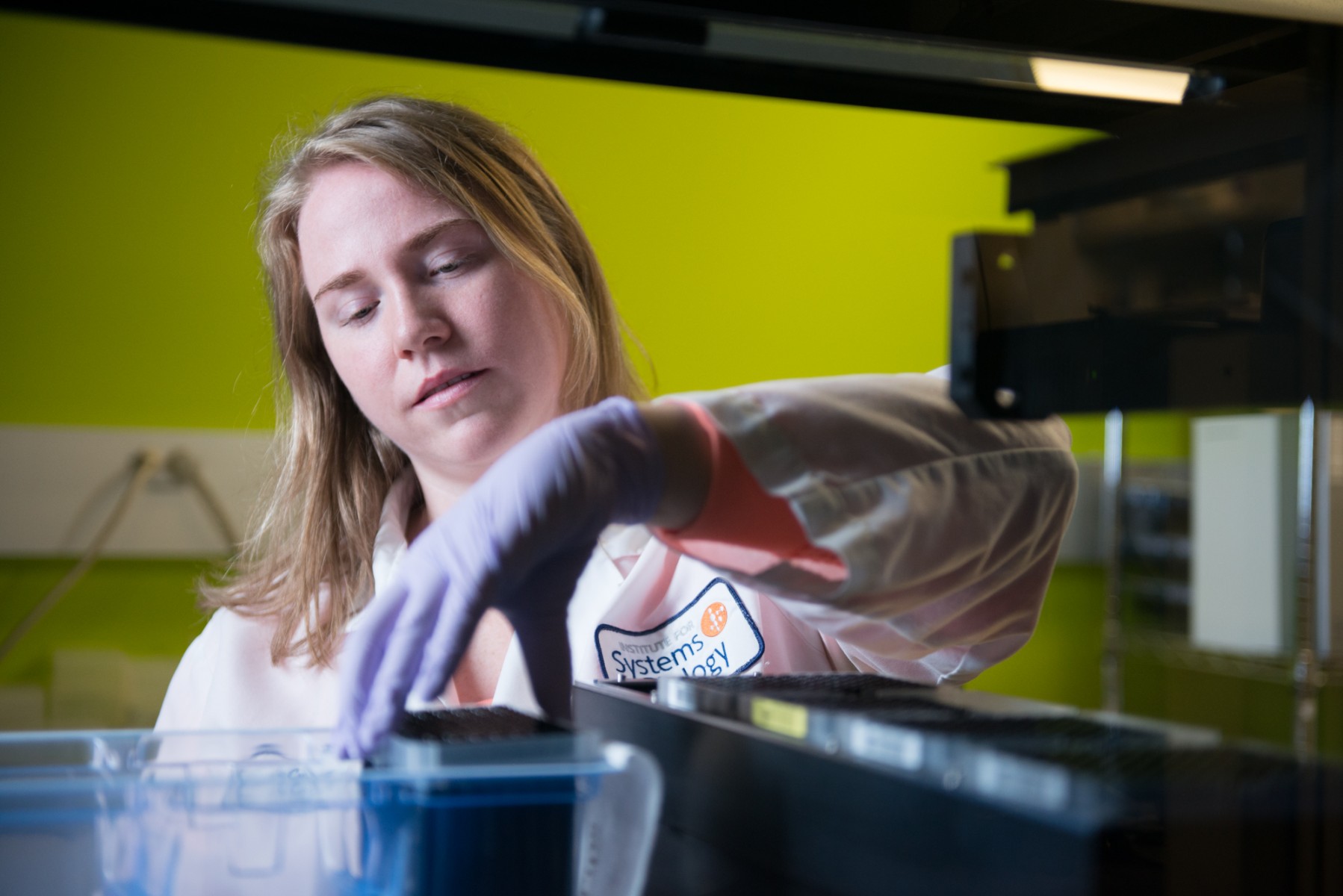ISB Q&A: Cora Chadick, Core Facilities Coordinator
 isbscience.org/news/2015/08/25/isb-qa-cora-chadick-core-facilities-coordinator/
isbscience.org/news/2015/08/25/isb-qa-cora-chadick-core-facilities-coordinator/
Q: What is your role as Core Facilities Coordinator?
Cora Chadick: In the Molecular and Cell (MC) Core, I train researchers how to use and/or I operate for them lab instrumentation such as flow cytometers, fluorescence microscopes, pipetting robots, NextGen sequencers and other various pieces of equipment. I also assist in planning experiments when core instruments are utilized and preform various administrative duties to keep everything running smoothly.
Q: What do you like best about your work?
CC: In my role, I get the benefit of being involved in many projects and multiple lab groups at ISB. This means I get to to puzzle over and help plan experiments ranging from quantifying soluble carbon in the oceans to optimizing settings on a microscope to phenotype single cells captured on a microfluidics device. I am thankful every day that the scientists here at ISB involve me deeply with so many aspects of their projects. It makes every day challenging and interesting.
Q: What’s most challenging about your work?
CC: Being a core is like operating a small business. We have to track our revenue and expenses and struggle to stay out of “the red” by the end of the year. This aspect of the job is an unpleasant necessity, but the MC Core works with a great team in the Operations department that is always there to make sure that the i’s are dotted and the t’s are crossed.
Q: What is the function of Core Facilities and why does ISB offer this service?
CC: The core facilities at ISB function to provide universal access to expensive equipment for a fee. Most users are ISB staff, but we have had regular users from as far away as Boston, MA. Having a centralized resource means that individual labs don’t have to invest in expensive instrumentation, hire a technician to run the equipment, and send postdocs and/or technicians for time-consuming off-site training. The Core is like an Uber driver who gets researchers from point A to B. Someone else owns and drives the car so you don’t have to. When utilizing core facilities the researchers are able to acquire data quickly and in a more cost-effective way, which leaves them to explore new ideas and share their findings through journal publications as quickly as possible.
Q: What is an “average” day for you?
CC: An average day sees me in one formal meeting, several impromptu discussions on questions that researchers have, at the bench processing samples, calibrating an instrument for an experiment, walking a researcher through how to set-up a piece of equipment for their experiment, generating quotes so users know how much running an experiment will cost, and in general having a good time with my sometimes goofy and always intelligent co-workers.






